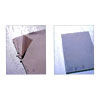
Tips for Preventing Rotting and Moisture Damage in Wet Areas
By CSR Gyprock|December 01, 2006
Most homeowners aren’t aware of the rot which can easily build up in the timber framework behind bathrooms, kitchens and laundries. Rotting is a ticking time bomb that homeowners need to prevent.
Which parts of my home are vulnerable to water damage?
Which parts of my home are vulnerable to water damage?
- Walls which line laundry, kitchen and/or bathroom sinks, toilets and shower areas
- Flooring in bathrooms, kitchens and laundries, especially shower recesses
- Rooms with high-humidity build-up or prolonged exposure to moisture, causing sagging walls, mould and mildew, flaking paint, dry rot and detached tiles
- Check shower bases regularly for cracks and the area around a shower base for water seepage
- Check pipe and hose connections at least once a year for leaks and wear and tear
- When on holidays, shut off water supply to toilets, washing machines and dishwashers
- Replace old and cracked window putty
- Clean drains, gutters and downpipes regularly or when necessary
- Ensure you build with the right products and systems for wet areas
- Gyprock Aquachek™ is a complete plasterboard solution featuring a gypsum core with highly moisture resistant additives and face and back linerboards treated to make them resistant to moisture and humidity
- Cemintel™ Compressed Sheet provides a smooth flat surface for tiled floors that can, protect against moisture damage. It’s lightweight and ideal for upper story additions
- Cemintel™ Wallboard is designed specifically for use in the lining of walls in kitchens, bathrooms, laundries and other areas commonly known as ‘wet areas’ in domestic buildings. It is immune to permanent water damage and will not rot
- Gyprock Aquachek™ sheets must be protected from internal and external moisture by wet area membrane or tray system that complies with the building code
- Check the lining system once a year
- Repair any cracks or damaged areas immediately by re-stopping and repainting, or by replacing tiles, pointing or sealants
- Impact damage to the linings resulting in small holes and cracks must be patched, stopped and finished as originally carried out
- Seek expert advice from builders or manufacturers such as CSR Gyprock in assessing the effect and repair of larger areas of damage
